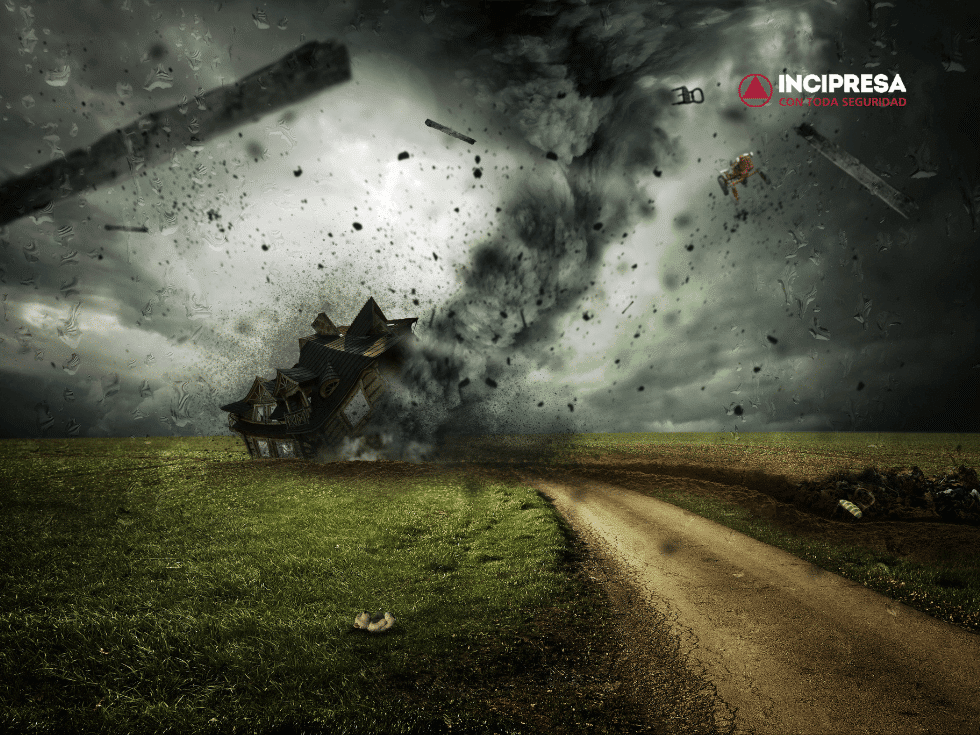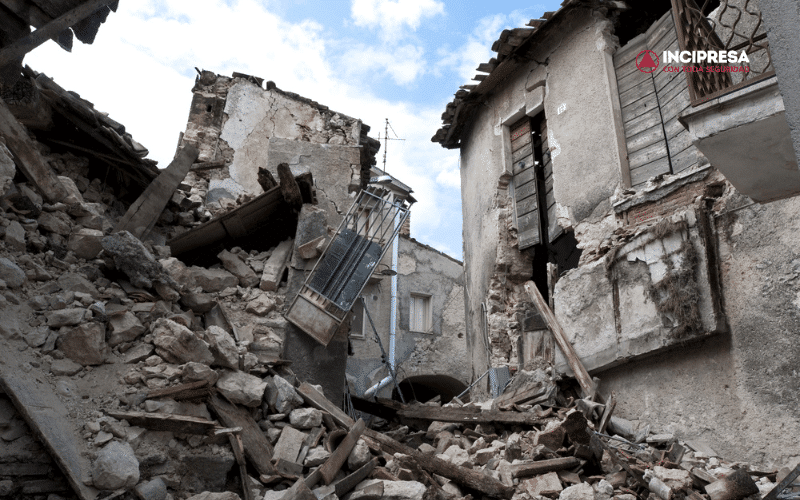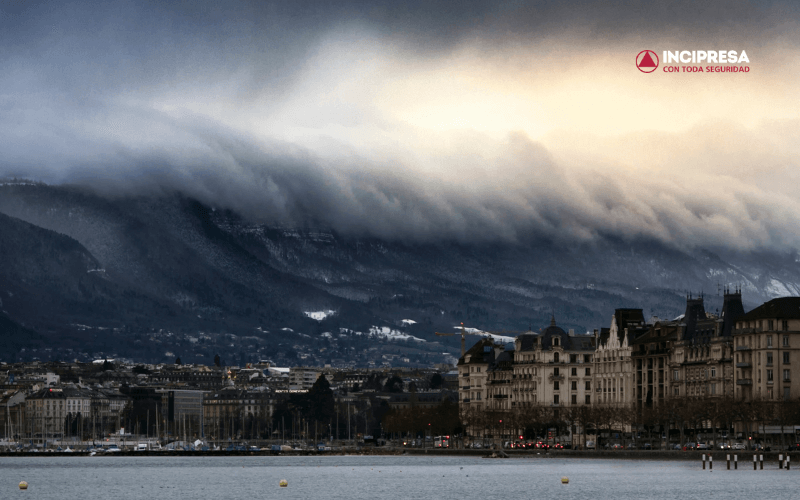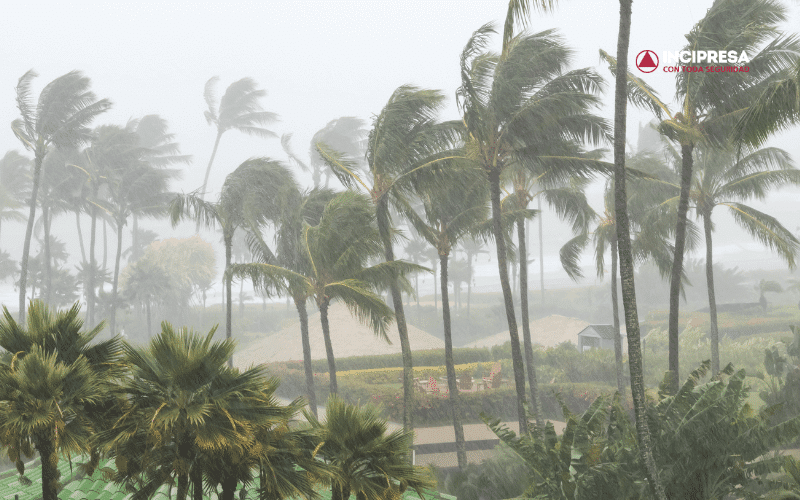Incipresa has participated in ALGARSAFE’25 – Portimão International Civil Protection and Relief Fair
Incipresa participated in ALGARSAFE'25 - Portimão International Civil Protection and…

Natural disasters are extreme events that occur due to natural processes on Earth . These events can be devastating to human communities and ecosystems, causing loss of life, material and economic damage, and long-term changes to the environment.
This article will examine some of the major types of natural disasters, including earthquakes, tsunamis, volcanic eruptions, hurricanes, floods, and droughts.
Earthquakes are sudden jolts of the earth’s surface caused by the release of energy accumulated in the earth’s crust due to tectonic activity.
These events can cause significant damage to infrastructure, buildings and homes, causing the loss of human and animal life, as well as economic damage.
Earthquakes can also trigger other natural disasters, such as tsunamis and landslides.
The magnitude of an earthquake is measured on the Richter scale, which ranges from 1 to 10, with 10 being the most destructive. Earthquakes of greater magnitude are less frequent, but cause more damage and have a greater impact on the affected areas.
Some of the deadliest earthquakes in history include the 1556 Shaanxi earthquake, which caused approximately 830,000 deaths, and the 2010 Haiti earthquake, which resulted in more than 200,000 deaths and left millions homeless.

Tsunamis are series of giant waves caused by sudden disturbance of the ocean, usually as a result of an underwater earthquake, volcanic eruption, or landslide.
These waves can reach heights of more than 30 meters and travel at speeds of up to 800 kilometers per hour, causing devastation in the affected coastal areas.
As tsunami waves move closer to the coast, their speed decreases and their height increases, causing massive flooding and damage to infrastructure and buildings.
Tsunamis can also cause loss of human and animal life, as well as long-term economic and environmental damage. One of the deadliest tsunamis in history was the 2004 Indian Ocean tsunami, which caused more than 230,000 deaths in 14 countries and left millions homeless.

Volcanic eruptions are events in which a volcano expels magma, ash, gases, and other materials to the earth’s surface. These events can be extremely destructive, causing loss of human and animal life, damage to infrastructure and buildings, and long-term changes to the environment and climate.
Volcanic eruptions can vary in size and intensity, from small eruptions that release gases and ash to massive eruptions that can have global effects.
The Volcanic Explosivity Index (VEI) is a scale that measures the magnitude of a volcanic eruption, and goes from 1 to 8, with 8 being the most destructive. Some of the most destructive volcanic eruptions in history include the eruption of Mount Tambora in 1815, which caused a “year without a summer” in 1816 due to the release of ash and gases into the atmosphere, and the eruption of Mount Pinatubo in 1991, which caused the evacuation of more than 200,000 people and had effects on the global climate.
Hurricanes are large-scale tropical storms that form over warm ocean waters and can cause destructive winds, torrential rains, and coastal flooding.
These storms can cause loss of human and animal life, damage to infrastructure and buildings, and long-term changes to the environment and climate.
The intensity of a hurricane is measured on the Saffir-Simpson scale, which ranges from 1 to 5, with 5 being the most destructive. Hurricanes of greater intensity are less frequent, but they cause more damage and have a greater impact on the affected areas.
Some of the deadliest and costliest hurricanes in history include Hurricane Katrina in 2005, which caused more than 1,200 deaths and estimated damage of more than $100 billion, and Hurricane Harvey in 2017, which caused more than 100 deaths and damage estimated at more than 125 billion dollars.

Floods and droughts are two types of water-related natural disasters that can have devastating effects on human communities and ecosystems.
Floods occur when excess water, either from heavy rains, snowmelt, or broken dams, covers areas that are normally dry. Floods can cause loss of human and animal life, damage to infrastructure and buildings, and long-term changes to the environment and climate.
On the other hand, droughts are events in which there is a shortage of water in an area for an extended period of time. This can be caused by a lack of rainfall, evaporation of water from the ground, or declining groundwater supplies.
Droughts can have devastating effects on agriculture, livestock and the availability of drinking water, which can cause famine, conflict and mass migration.
In short, natural disasters are extreme events that can have devastating effects on human communities and ecosystems. Understanding these events and their causes is essential for the prevention and mitigation of their effects, as well as for the adaptation and recovery of affected communities and ecosystems.